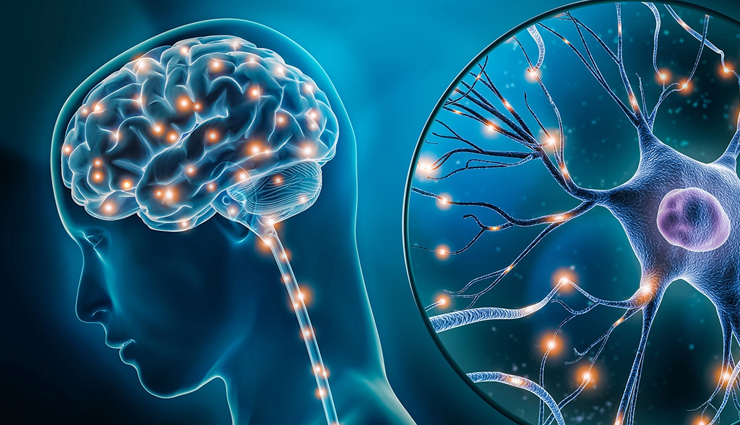- Home›
- Healthy Living›
- What Is Serotonin Syndrome? Major Causes, Symptoms And Treatment
What Is Serotonin Syndrome? Major Causes, Symptoms And Treatment
By: Saloni Jasoria Thu, 05 Dec 2024 1:26:30

Serotonin Syndrome is a potentially life-threatening condition caused by excessive accumulation of serotonin in the body, often resulting from the use of medications or substances that affect serotonin levels. Serotonin, a key neurotransmitter, regulates mood, digestion, sleep, and other physiological functions. However, an imbalance, particularly an overload, can disrupt normal bodily functions.
Serotonin syndrome, also referred to as serotonin toxicity, is a potentially life-threatening condition resulting from an excessive buildup of serotonin in the body, often triggered by the use of serotonergic drugs.
This condition can occur when serotonin-based medications are taken for therapeutic purposes, unintentionally overdosed, or combined with recreational drugs that cause harmful interactions. Additionally, a variety of drug combinations may also lead to serotonin syndrome.
Serotonin, or 5-hydroxytryptamine (5-HT), is a neurotransmitter vital for regulating behavior, memory, and mood. It plays a crucial role in treating neurological and psychiatric conditions such as depression, anxiety, phobias, bipolar disorder, and aggressive behavior, where serotonin levels are often low. Serotonergic drugs help manage these conditions by boosting serotonin activity.
Symptoms of serotonin syndrome can range from mild to severe, affecting the brain and nervous system, and in extreme cases, can be fatal. Let’s explore this condition in detail.
Major Causes
Serotonin Syndrome results from excessive serotonin activity in the nervous system, primarily due to medications or substances that increase serotonin levels.

# Medications:
* Antidepressants:
Selective Serotonin Reuptake Inhibitors (SSRIs): e.g., fluoxetine, sertraline.
Serotonin-Norepinephrine Reuptake Inhibitors (SNRIs): e.g., venlafaxine, duloxetine.
Monoamine Oxidase Inhibitors (MAOIs): e.g., phenelzine, selegiline.
Migraine Medications: Triptans (e.g., sumatriptan, rizatriptan).
Opioids: E.g., tramadol, fentanyl.
Other drugs: Linezolid (an antibiotic), dextromethorphan (cough suppressant).
# Drug Interactions:
Combining serotonergic medications (e.g., SSRIs and MAOIs).
Use of multiple drugs that act on serotonin pathways without adequate guidance.
# Recreational Drugs:
Ecstasy (MDMA), cocaine, LSD, amphetamines.
# Herbal Supplements:
St. John’s Wort, ginseng.
# Overdose:
Accidental or intentional overdose of serotonergic drugs.
Symptoms
Symptoms usually appear within hours of exposure to the offending substance and may vary in severity:
# Mild Symptoms:
Agitation or restlessness.
Dilated pupils.
Sweating (diaphoresis).
Tremors or muscle twitching.
Rapid heart rate.
# Moderate Symptoms:
Hyperreflexia (exaggerated reflexes).
High blood pressure.
Shivering or goosebumps.
Diarrhea or nausea.
# Severe Symptoms:
High fever (hyperthermia).
Muscle rigidity.
Confusion, delirium, or unconsciousness.
Seizures.
Coma or life-threatening complications like organ failure.
Treatment
# Immediate Actions:
Discontinue Offending Agent: Stopping the drug responsible is the first step.
Call for Emergency Medical Assistance: Especially in severe cases.
# Supportive Care:
Vital Sign Monitoring: Blood pressure, heart rate, and temperature.
Cooling Measures: To manage hyperthermia (cooling blankets or ice packs).
Intravenous Fluids: To prevent dehydration and stabilize blood pressure.
# Medications:
Benzodiazepines: (e.g., lorazepam or diazepam) to reduce agitation, tremors, or seizures.
Cyproheptadine: A serotonin antagonist, used in severe cases to counteract serotonin overload.
Beta-blockers: To manage high blood pressure and heart rate.
# Hospitalization:
For severe symptoms, admission to an intensive care unit (ICU) may be required.
# Preventive Measures:
Use serotonergic drugs under medical supervision.
Avoid combining serotonergic agents without consulting a healthcare provider.
Read medication labels carefully to avoid interactions.
Related Stories:





